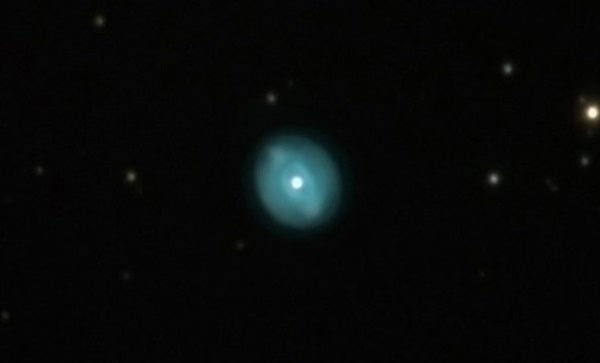Here’s an object that’s a lot of fun to show to others at summer and fall star parties. Through 8-inch and smaller telescopes, the Blinking Planetary (NGC 6826) in Cygnus appears to blink when viewed with direct, and then averted, vision.
To find this nebula, point your telescope 1.4° east of the magnitude 4.5 star Theta (θ) Cygni. This planetary nebula measures 25″ across and glows at magnitude 8.8. It lies some 2,000 light-years away.
The first observers to record this effect were American astronomers James Mullaney and Wallace McCall at Allegheny Observatory in Pittsburgh. They wrote in August 1963 about the effect, which they saw while using the observatory’s 13-inch Fitz-Clark refractor.
More recently, astronomers studying images of the Blinking Planetary have identified two slightly fainter spots on either side of the nebula. Christened Fast Low-Ionization Emission Regions (FLIERs), they are clouds of gas moving away from the central star much faster than the planetary’s shell. They’re a bit fainter because high-energy ultraviolet radiation from the star, which ionizes the gas in the expanding shell, doesn’t have the same effect on the gas in the FLIERs. The higher density of these regions probably accounts for this difference.
With a medium-sized scope and using direct vision, you’ll spot the 11th-magnitude central star easily, but the nebula won’t be visible. Use averted vision and look just a bit to the side of the star, and the nebula pops into view. Not only that, its apparent brightness under averted vision swamps the star’s light. So, by looking back and forth with averted and then direct vision, you can make this object blink. It takes some practice, but the result is quite fun.
The best way to see this effect is from a dark site with a 6-inch scope and a magnification of about 100x. Do note that if you use too large a scope, the brightness of the nebula will overwhelm the star and you won’t see the blinking effect.
Make sure to explore Astronomy’s full list of 101 cosmic objects you must see. New entries will be added each week throughout 2022.










